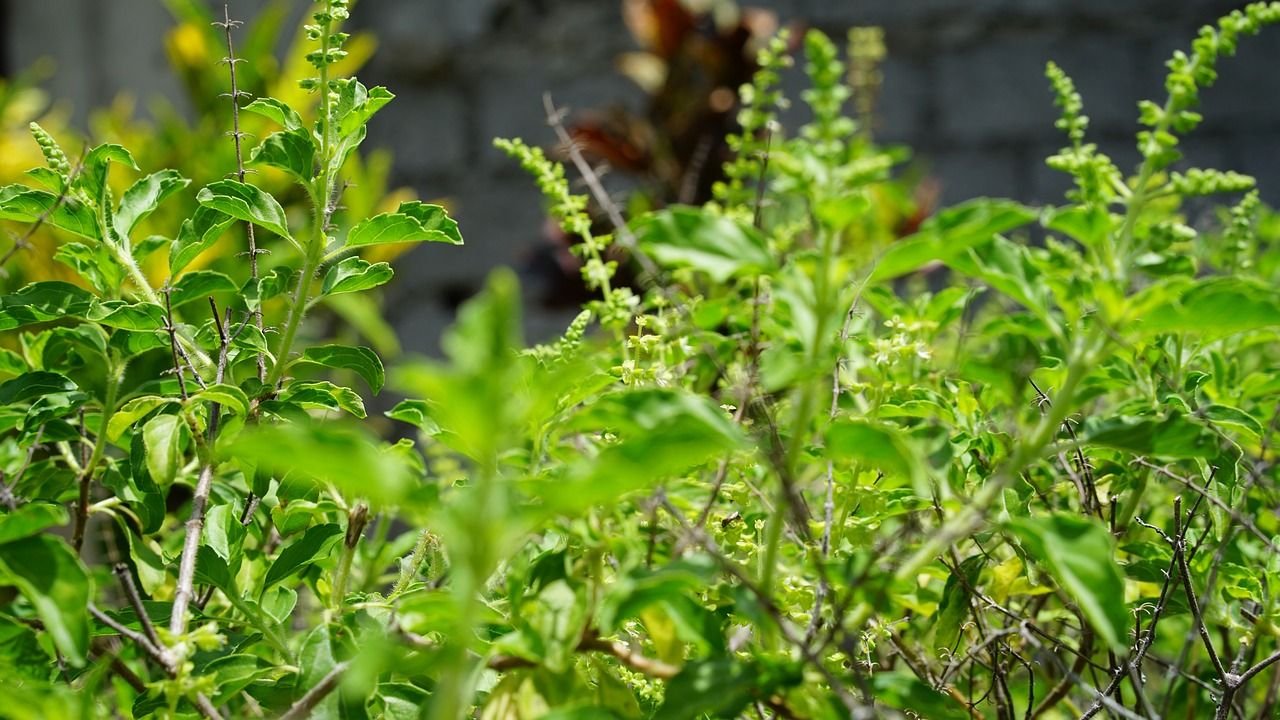Holy basil is also commonly called Tulsi in Hindi. By growing it at home, its fresh leaves can be used in various ways. Its fresh leaves are more beneficial. Let us know how it can be grown at home and how to take care of it:

Quick Facts of Holy basil
| Scientific name | Ocimum tenuiflorum |
| Synonyms | Ocimum sanctum |
| Family | Lamiaceae (Mint family) |
| Common name | Tulsi (in Hindi), Holy basil |
| Habit | Perennial herb, green and light purple leaves |
| Size | up to 75 cm tall |
| Plant part use | Leaves, seeds, or sometimes full plant |
| Habitat | Native to Indian subcontinent and southeast Asia |
| Grows at | Worm tropical climates |
| Cultivation | Widely cultivated in tropical and subtropical regions |
| Soil | Well drained soil |
Process of growing Holy Basil
- Temperature: The Holy Basil plant grows in a hot tropical climate. It prefers a 21 to 32-degree temperature, so it should be sown in sufficient sunlight.
- Soil: The soil where it is being sown should be well-drained, fertile, and well-drained. The soil should be slightly acidic with a pH of 6.0 – 7.5.
- Growing from seeds: If you are going to grow Tulsi from seeds, then sow its seeds after the winter is over because this plant cannot survive in extreme cold. Sow its seeds in a pot and if you are sowing them directly in the ground, then keep a distance between the seeds because they become a little dense when they grow.
- Sowing through seedlings: If you want to sow Tulsi directly through the plant instead of seeds, then dig a pit in the soil and sow its sprouts in it, keep in mind that the root of the seedling should be level with the soil.
- Water on time: Keep the soil moist continuously but do not let it get waterlogged.
Protect from insects and fungal diseases:
- Many insects often attack the Holy Basil plant, so protect it from insects and, if possible, use organic pesticides.
- The Tulsi plant often has no disease, but due to excessive watering, it gets fungal infections, so protect the plant from excessive water.
Method of use:
- When the plant grows you can pluck its leaves and use them directly. When seeds come out in the plant, you can sow them at other places after they dry up
Conclusion
It is easy to grow Tulsi plants, you just have to take care of some things like not keeping them too wet and protecting them from insects. Tulsi is considered sacred in Indian tradition. People plant it in the courtyard of their house and worship it every day. Due to these qualities, today it has made its place in Ayurveda.
Remember, before starting any new wellness regimen, it’s always best to consult with a healthcare professional to ensure it is suitable for your specific needs and circumstances.
Frequently Asked Question
Holy basil has a unique and complex flavor. Sometimes it tastes more pungent than regular basil, sometimes it tastes of licorice, clove, and mint. At times it can cause a dry feeling in the mouth.
There are also different varieties of holy basil with different flavors:
- Rama Tulsi: More clove-like and pungent.
- Krishna Tulsi: Crisp and spicy.
- Vana Tulsi: More fragrant and sweet, anise-flavored basil.
Holy basil can be consumed in a variety of forms. Fresh leaves can be added directly to recipes, and dried leaves are convenient for teas or meals. Fresh leaves provide the most flavor, while capsules provide a controlled dosage that should not be consumed without consulting a doctor.
Absolutely! You can experience fresh Holy Basil leaves and their unique flavor in a variety of ways. You can add them to Stir-fries, Soups, Curries, Salads, and Teas and enjoy it.